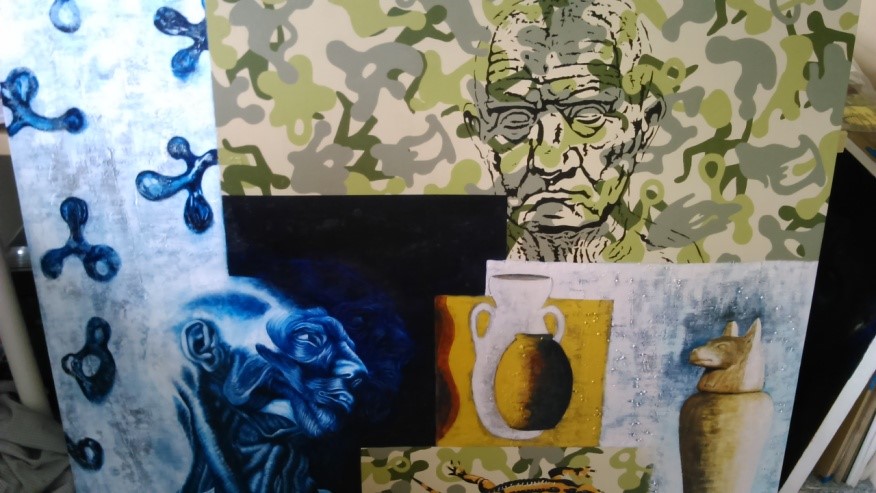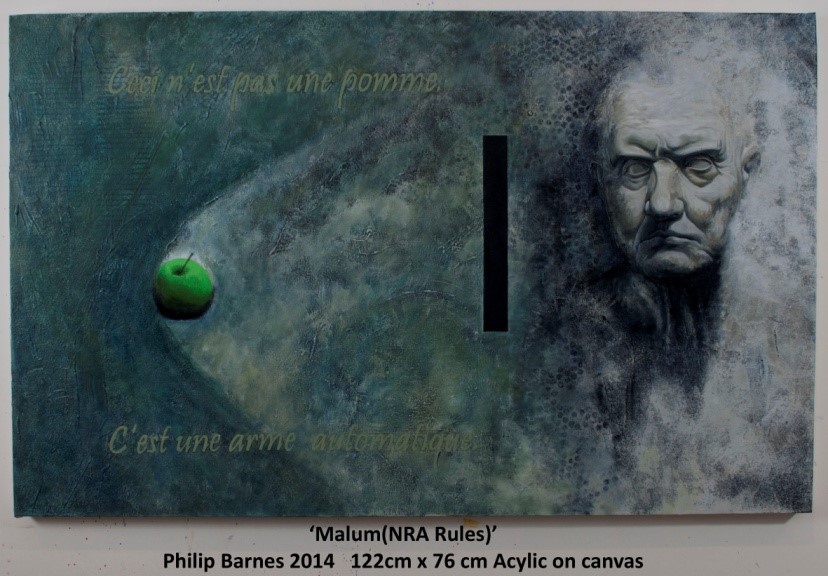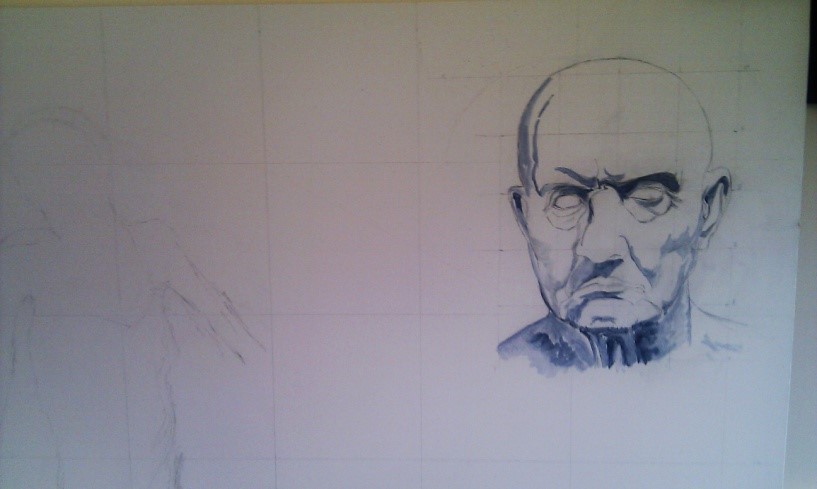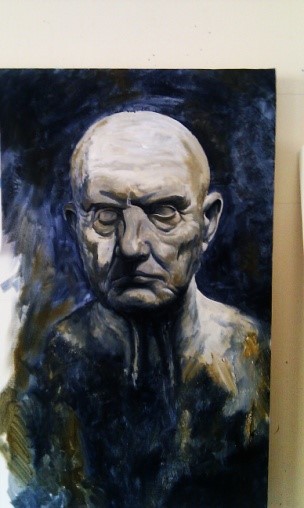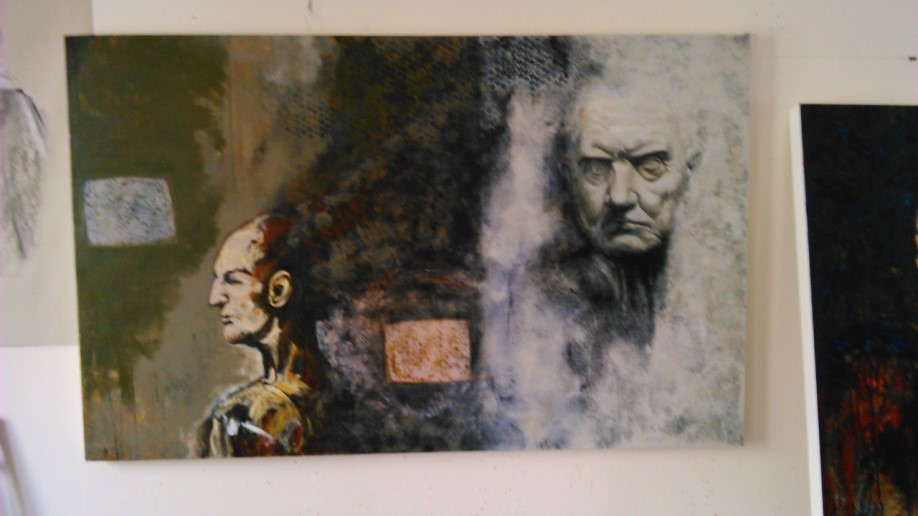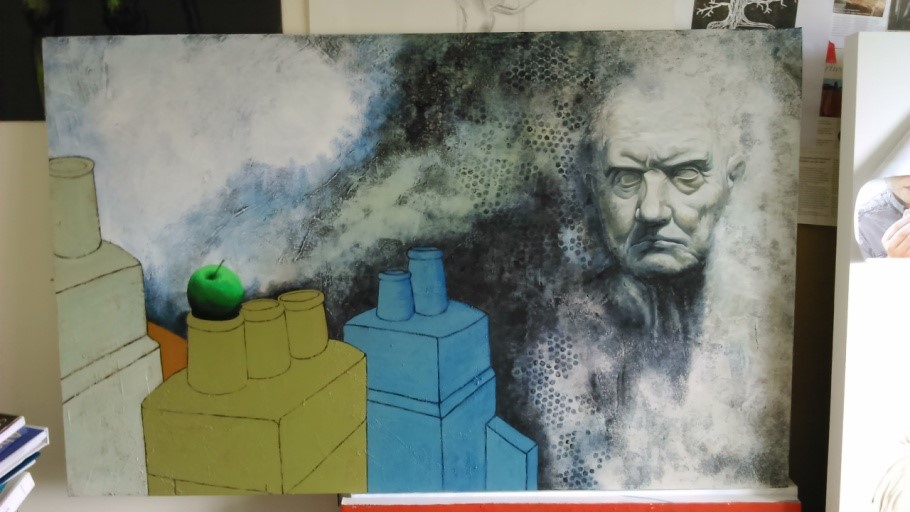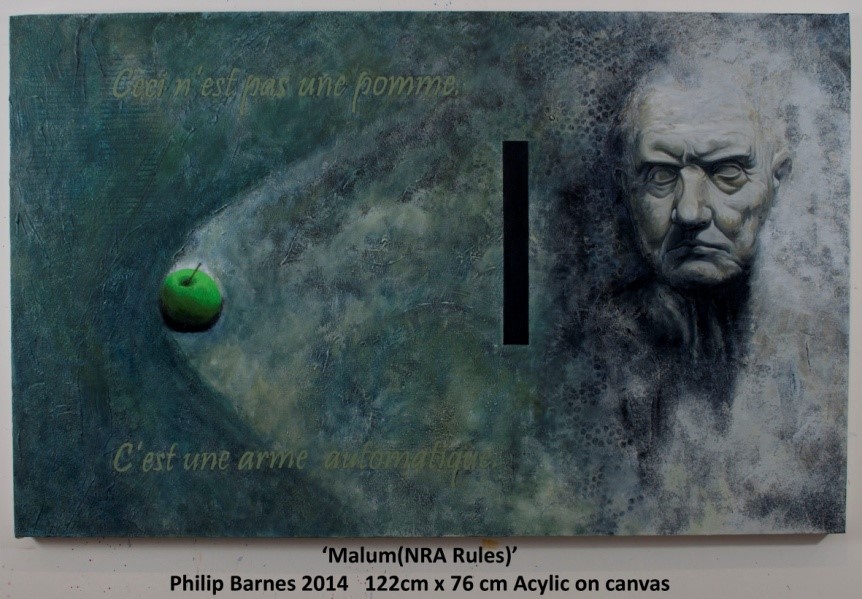The Unconscious Mind – Philip Barnes 2015.
I will undoubtedly be asked what my paintings are about. I believe they refer to my ‘unconscious mind’ though they contain universally understood elements. Do they reach out and bring forward the unconscious mind of others?
When I studied my fine art degree, as a mature student, I gave up painting very early and focused on conceptual works where the idea chose the mode of presentation. These were successful and when I did my MA at the Royal College of Art, I continued along these lines. Even then I was trying to stray from this path into a form of abstract representation of ideas through mazes and labyrinths. After a period of years I have eventually found a path which suits me.
When I returned to thinking about art, I decided to revisit painting. I was determined not to have a predetermined conceptual approach where I thought about what I wanted to say and then designed the painting to achieve this. Instead I wanted to try to connect with a more intuitive approach which allowed me to play without any concern for the outcome. I made some boards and just started to paint. The first paintings were juxtapositions of images which attracted me or which came into Amy head.
As time went by the paintings began to challenge me. They made me think as I was painting. Ideas came into my head stimulated by what I had started to paint. In responding to the process of painting I began to see that the ideas which came into my head began to make sense and the paintings developed, were painted and re-painted until I felt I needed to stop. An example of this process at work is in the painting ‘Malum (NRA Rules)’.
I had decided to paint one of the Roman sculpted heads I liked onto canvas. I positioned it at one end and as I painted my first thought was that the ‘un-seeing eyes’ were looking towards another figure and so I drew this figure into another part of the painting.
However as I painted I changed my mind and painted a different figure.
But this didn’t work for me. I saw a Patrick Caulfield painting with chimneys in it and they struck a chord so without much thought I painted some chimneys over the figure. Then I was eating an apple and decided that there should be an apple stuck in the chimney.
I began to fix on the apple. I began to see my head as a god like figure and perhaps innevitably I began to think about Adam and Eve. Though the forbidden fruit of Eden in the Book of Genesis is not identified, in popular Christian tradition it was an apple that Eve shared with Adam. I wondered why God hadn’t banished the apple from the Garden of Eden? Wasn’t the apple just as culpable as the snake or Adam and Eve? The painting sat there for a while as these thoughts developed. Then as I was reading the paper when I came across an article about President Obama’s attempts to ban automatic weapons and the NRA’s (National Rifle Association) argument that it wasn’t guns which were inherently evil just those who used them. It occurred to me that this argument applied to the apple. The apple was like an automatic rifle. Using the NRA’s argument the apple itself couldn’t be blamed for its misue neither could God (as maker of the apple) or the gun manufacturers as makers of automatic rifles (or should theybe blamed?). Very quickly I thought of Magritte’s painting of a pipe in ‘The treachery of images’ and that the apple wasn’t an apple but a metaphor for automatic weapons. I also recognised that Magritte had also used apples in his work so there seemed another link. I decided to play on this theme and the final painting arrived. It then turned out that the latin for an apple ‘Malum’ is the same as the latin for ‘evil in itself’!
Whether the final painting is of any value is for others to decide but the process of free association which I was developing was working for me and that has to be the starting point for any artist.
Increasingly, this approach to painting has become my preferred way of working:
- Minimal initial planning.
- Developing the painting in response to what is going on in my head at the time and the paintings as they develop.
- Finishing when it feels right.
Some would describe this as a surrealist or symbolist approach. I am relaxed about such characterisation. I do however believe that this process has allowed me to delve into my ‘unconscious mind’ and to respond to what is happening in it.
